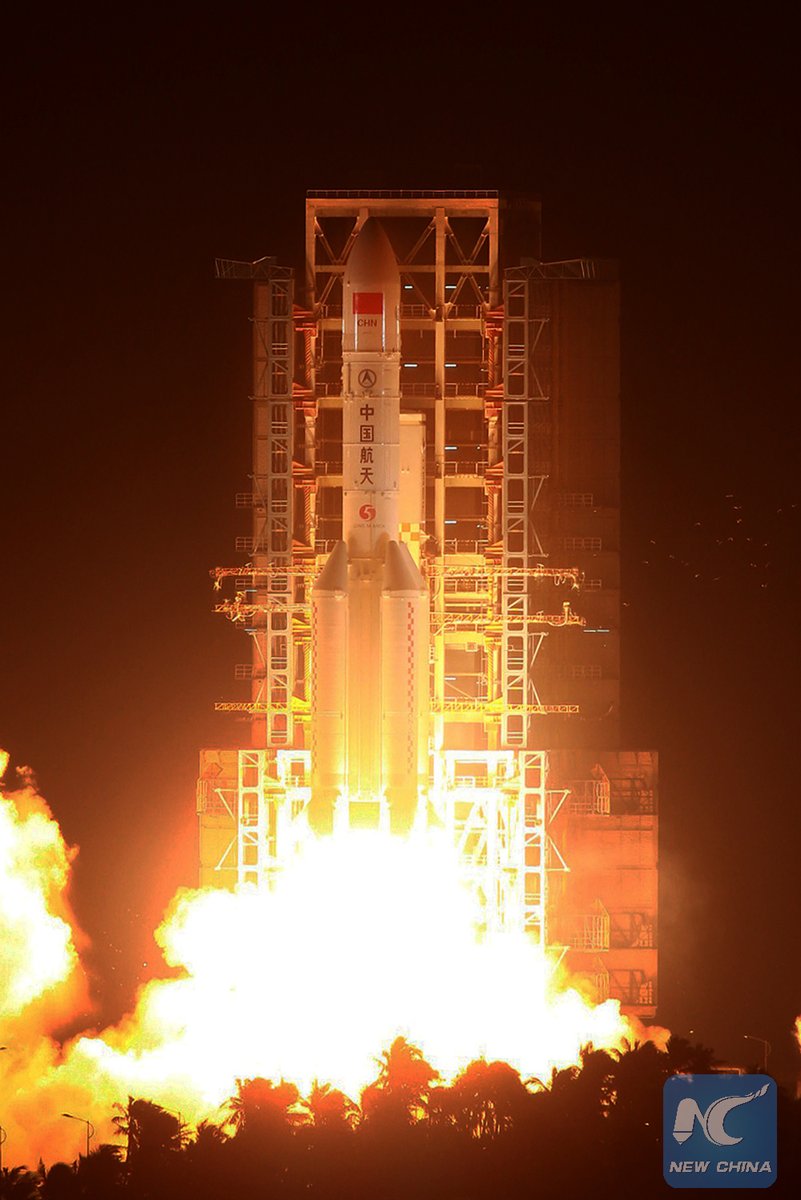

China’s space program has surged forward once more, having launched its largest-ever rocket, the Long March 5 (“Chang Zheng 5” in Chinese). Built by the Chinese Academy of Launch Vehicle Technology, the heavy space launch LM-5 has a thrust of 1060 tons and a payload capacity of 25 tons, putting it in the same class as global heavyweights like the American Atlas V, Delta IV Heavy, and European Ariane V. The Long March 5 launched on Nov. 3, ultimately carrying the experimental Shijian 17 electronic propulsion satellite (pictured below) into geostationary orbit (GEO).

Originally, there would have been six LM-5 variants, but they have been superseded by the Long March 6, which first flew in September 2015, and Long March 7 in June 2016. Together, the Long March 5, 6, and 7 will be the workhorses of the modernized Chinese space launch program.

The LM-5’s research and development phase began in 2007, followed by fabrication of the rocket fuselage, with integrated testing of components like fuel lines, propellant tanks, jetpumps, and electronic controls, beginning November 2015. With a fuselage skin only 3 millimeters thick, the LM-5’s safety features include doubly redundant critical systems, such as electronic controls. LM-5’s rocket motors burn liquid oxygen and liquid hydrogen (LOX/LH), with only water as a byproduct, making it very environmentally friendly compared to previous Long March rockets, which used dinitrogen tetroxide and the carcinogenic unsymmetrical dimethylhydrazine.

The LM-5 has a payload faring diameter of 17 feet, enabling it to carry much wider cargos than smaller previous Chinese rockets. This is critical for payloads like permanent space station modules and large diameter spy satellites. Both LM-5 variants have a 16.4-foot diameter for the first stage and uses four booster rockets. Each booster rocket has a thrust of over 140 tons from its twin YF-77 engines.

The LM-5 that flew on Nov. 3 was the Long March 5E variant, which is geared toward geostationary orbit (GTO) launches. In its first stage, it uses two 72-ton thrust YF-77 liquid hydrogen and oxygen engines in its core stage, assisted by its four boosters. Operating in the vacuum of deep space, the Yuanzheng 2 (YZ-2)”space tug” and second stage, powered by two 10-ton thrust YF-75D engines, places the payload into GEO. Objects in GEO are high enough to stay over the same geographical location, making them critical for activities which require continuous line of sight to specific areas, like communications and navigation.

In contrast, the Long March 5B deletes the second stage, but retains the same four booster set-up. The weight savings from removing the second stage LM-5B enable it to carry 25 tons to low earth orbit (LEO), including massive payloads like space stations. In contrast, the previous Chinese rocket, the Long March 2, could only carry 10 ton payloads into LEO.

The LM-5 has a long mission manifest in the years to come. Next year, it’s rumored to be launching a next generation Chinese military communications satellite to GEO, and then the Chang’e 5 lunar soil return mission and the Martian rover in 2018-19. More heavy lifting will follow, for the 20-ton modules of the Chinese permanent space station. Potential future missions after that include launching large spy satellites, and even a possible manned lunar mission involving multiple LM-5s.
You may also be interested in:
China’s Space Station Plans In Powerpoint: A Closer Look at Tiangong 3
China’s Largest Space Launch Vehicle, the Long March 7 Flies, With a Technological Triple Whammy
China’s Long March 5 Rocket Stretches its Legs
China’s Largest Ever Space Rocket Takes Another Big Step Forward
Next Generation of Chinese Space Vehicle Begins its Long March (by standing up)
The Little Space Tug that Can
